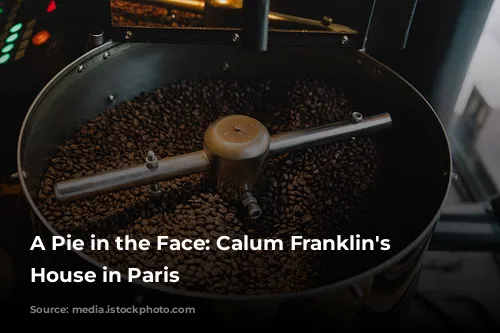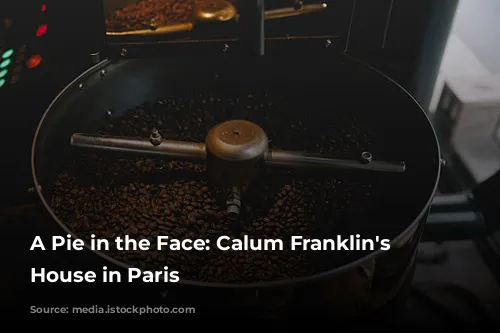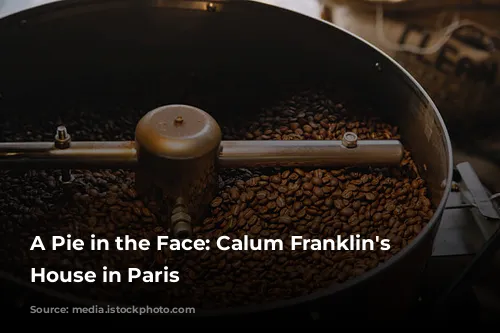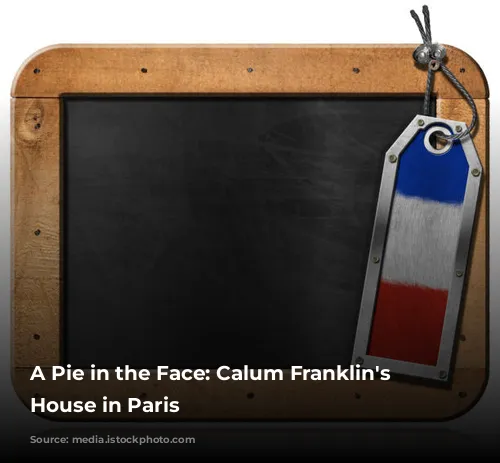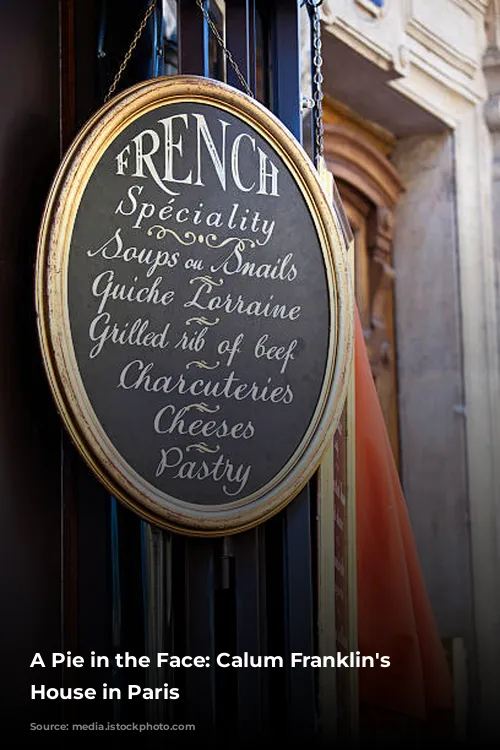It was a simple idea: hop on the Eurostar to Paris and enjoy a delicious dinner at Public House, a daring new eatery in the 9th arrondissement by pie maestro Calum Franklin, formerly of the famed Holborn Dining Room. The goal was to bring the beloved British classics of scotch eggs, sausage rolls, and flaky pastry creations to the French palate. I envisioned a charming scene – Parisian elites, sporting Louboutin heels, swooning over steak and ale pies, their culinary horizons expanding with every bite. “Donney-moi une autre pie,” I imagined them saying, embracing the gravy-slicked delights of British cuisine. After all, if anyone could make the French appreciate the depth and quality of modern British food, it was Franklin. He’s a talented chef, a delightful man, and the undisputed pie king – the author of the definitive book on the subject. Go Calum, go!
A Culinary Disaster
But then, the reality struck. The fantasy crumbled. Why couldn’t life stick to the script? To find some solace, I could point out that Public House isn’t a truly British restaurant – it’s owned, run, and staffed by French people, employing a British chef. This could be framed as a Parisian-made disaster. However, even that nationalistic spin couldn’t mask the disastrous experience. No Calum, no.
A False Promise
On my iPhone screen, Public House looked like a dream. Each Instagram post painted a picture of perfection – the installation of colorful tiles, the beautiful carpentry of the bar and staircases, the polished brasswork and mirrored inlays. Up close, the details were indeed beautiful. But seated in the first-floor dining room, squeezed between a pillar and a towering blonde giant, the Fanta-orange walls, bright lighting, and odd faux-Scottish references made the experience unsettling. It was called Public House but it was no pub, at best a caricature of a family-friendly pub trying to attract the wrong crowd.
Stale Bread and Tepid Food
The bread basket arrived, filled with thick slices of sourdough. It was “heritage sourdough,” meaning it was somewhat old. Each piece was dry and stale, a testament to its being sliced well in advance. We asked for butter to soften the blow. Twenty minutes later, we asked again. Eventually, a tiny sliver of butter, the size of a 50p coin, appeared. Our waiter clearly wasn’t happy to deliver it. Well, the French are known for preserving their traditions, and if that means offering restaurant service that’s as far removed from warm hospitality as Finland in February is from a beach holiday, so be it.
Our first dish was pig’s head croquettes. These were dense, deep-fried cubes of braised meat that, like the sourdough, may have been delicious once. But they were tepid and stiff, like the last canapés at a party, cooked in advance and left to sit. The scotch egg, with its black pudding casing, suffered the same fate – lukewarm and undercooked. The egg had a jelly-like yolk, but the outside was cool, raw, and even liquid in places. We couldn’t finish it.
A Misunderstood Menu
Despite dish descriptions being in French, titles were in English. We ordered whitebait, only to be served white bean soup. Our waiter, who hadn’t bothered with a notepad, muttered that he had misheard. The whitebait arrived eventually, hot at least because they were cooked to order. We devoured them eagerly, but they lacked the desired crunch. The meager portion of anchovy hollandaise disappeared quickly.
The Lobster Pie Debacle
The menu featured a section titled “The Pie Room,” my reason for coming. I yearned for the hot pork pie Franklin served at the Holborn Dining Room, the pastry crackling with animal fat and a generous, gravy-drenched filling. The Public House menu boasted a braised beef pie, a dauphinoise and aged cheddar pie, and the pièce de résistance – a lobster pie for two at €69. We had to order it.
A golden, scored puff pastry shell arrived, enveloping whatever lay beneath. A lobster head peeked out shyly from one end, the tail from the other. Obviously, the lobster lay in between. Or not.
Under the pastry lay huge, nearly raw quarters of fennel bulb, unappealing potatoes, and a paltry amount of seafood. We pushed aside the vegetables, desperately searching for lobster tail meat. It was Finding Nemo, minus the happy ending. To add insult to injury, only the surface of the pastry was golden brown. Peel it back, and you were met with a heavy, beige, raw pastry duvet. It was a combination of poor conception and execution.
It turned out that Franklin wasn’t in the kitchen that night, after spending weeks in Paris. Had he been there, perhaps the pig’s head croquettes would have been hot, the scotch egg cooked through, the bread fresh. But even if the fennel and pastry hadn’t been raw, the lobster pie would still have been a major disappointment.
The waitress noticed our uneaten meal and asked what we thought. “Not much lobster,” I said. She nodded. “That’s what I told the chef. But we’re going to have a new menu in a month, hopefully.”
Consolation and Disappointment
Like children after a dreadful school day, we found comfort in a DIY ice cream sundae and a sturdy sticky toffee pudding. The wine list was 85% French, with a few bottles from other countries, none of them from the UK. An odd choice for a restaurant labeled a “British Brasserie,” considering the quality of British wines.
Many people in London’s food and restaurant scene will be disheartened, even angry, by this review of a Calum Franklin restaurant. One of those people is me. But to remain silent after such a dismal experience would be dishonest. In a few months, the British Olympic team will arrive in Paris. I hope they have better luck.



